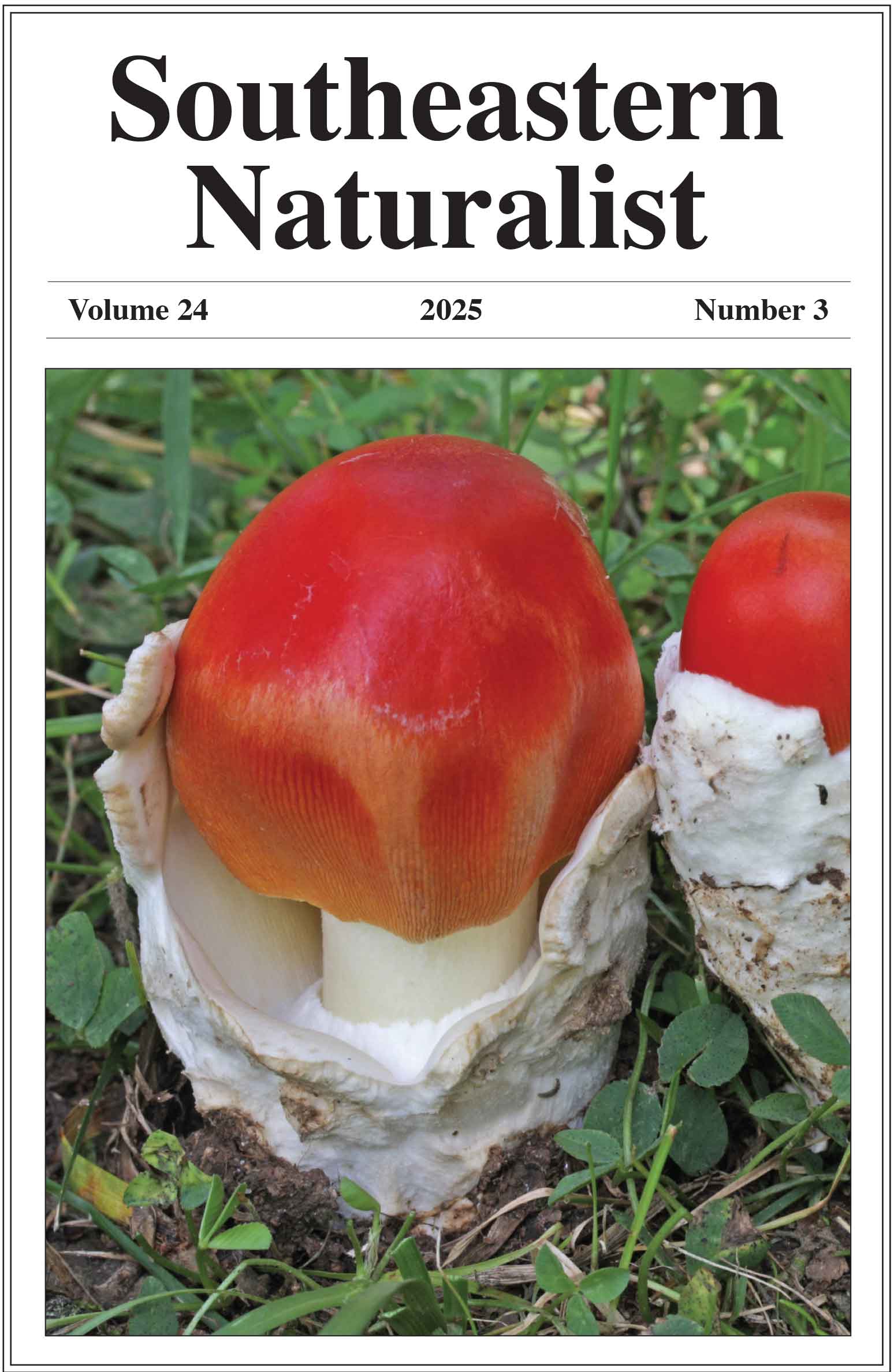White-throated Sparrows (Zonotrichia albicollis) Use Alternate Roost Locations During Inclement Weather
Rebecca E. Stephens1, M. Elisa González2, Amanda E. McNeill1, Lucy E. Floyd1, Abigail R. Howell1, Kenneth F. Kellner3, and Patrick J. Ruhl4,*
1Department of Biology, Harding University, Searcy, AR 72149. 2Department of Biology, Universidad del Valle de Guatemala, Guatemala City, Guatemala. 3Department of Fisheries and Wildlife, Michigan State University, East Lansing, MI 48824. 4Department of Forestry and Natural Resources, Purdue University, West Lafayette, IN 47907. *Corresponding author.
Southeastern Naturalist, Volume 24, Issue 3 (2025): 352–367
First published early online: 28 September 2025
Abstract
Although roosting behavior and habitat associations comprise a significant component of a bird’s full annual cycle, roosting ecology has been overlooked or underrepresented in research and management initiatives for many species. We know that roost habitat requirements may differ substantially from spatially discrete foraging or breeding habitats for some species, but it remains unclear, however, how fluctuating weather conditions may impact roost-site selection. We radio-tracked 15 Zonotrichia albicollis (White-throated Sparrow) to their roosts from 20 January to 29 February 2024, and compared roost-site selection with local weather-station data to assess the impacts of weather covariates (precipitation, wind speed, and barometric pressure) on roosting behavior. More specifically, we used a mixed-effects logistic regression model to assess whether auxiliary roost occupancy was influenced by weather covariates and individual characteristics (sex and color morph). The likelihood of auxiliary roost-site selection was positively associated with precipitation and average wind speed, and negatively associated with barometric pressure. In some cases, auxiliary roost locations used during inclement weather were located >450 m outside of core roost home ranges. Our data highlight the importance of auxiliary roost habitat on the landscape and emphasize the need for more research to elucidate roosting behavioral plasticity in response to both biotic and abiotic factors.
![]() Download Full-text pdf (Accessible only to subscribers. To subscribe click here.)
Download Full-text pdf (Accessible only to subscribers. To subscribe click here.)
Access Journal Content
Open access browsing of table of contents and abstract pages. Full text pdfs available for download for subscribers.
Issue-in-Progress: Vol. 24( 4) ... early view
Check out SENA's latest Monograph and current Special Issue in progress:













 The Southeastern Naturalist is a peer-reviewed journal that covers all aspects of natural history within the southeastern United States. We welcome research articles, summary review papers, and observational notes.
The Southeastern Naturalist is a peer-reviewed journal that covers all aspects of natural history within the southeastern United States. We welcome research articles, summary review papers, and observational notes.